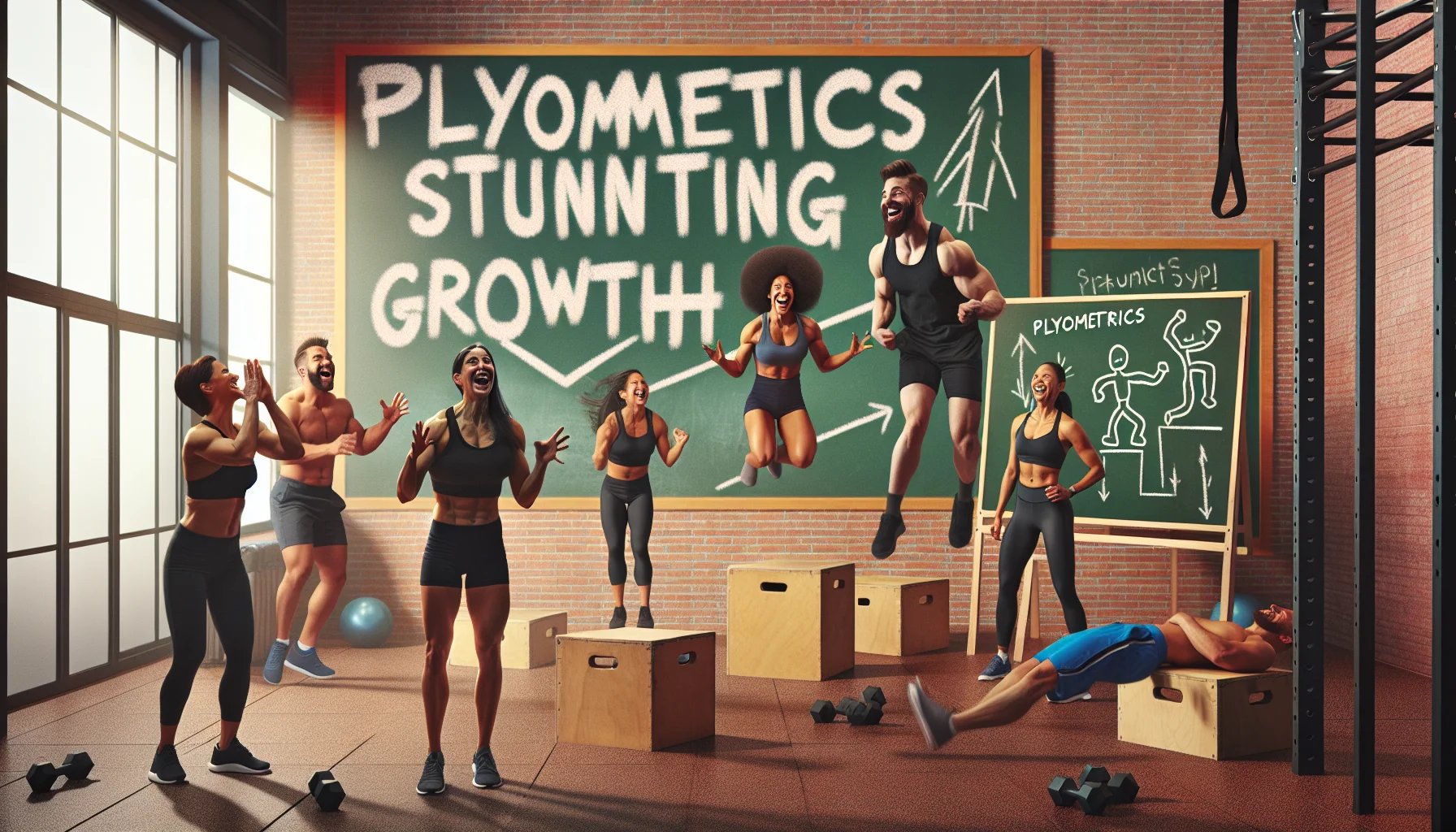Does plyometrics stunt growth Quiz
Test Your Knowledge
Question of
Does Plyometrics Stunt Growth?
Plyometrics, often known as jump training or plyos, are exercises in which muscles exert maximum force in short intervals of time, with the goal of increasing power (speed-strength). This form of training is popular among athletes, fitness enthusiasts, and individuals looking to improve their physical performance. However, there has been ongoing debate about its safety, particularly concerning younger individuals who are still growing. Questions have been raised regarding whether the high-impact nature of plyometric exercises could potentially affect growth plates, thereby stunting growth. This topic is of significant relevance as it touches upon the intersection of fitness, health, and developmental biology, making it a critical consideration for coaches, parents, and young athletes alike.
Understanding Plyometrics
Plyometrics, also known as jump training or plyos, are exercises in which muscles exert maximum force in short intervals of time, with the goal of increasing power (speed-strength). This training focuses on learning to move from a muscle extension to a contraction in a rapid or "explosive" manner, such as in specialized repeated jumping. Plyometrics are used to improve the performance of athletes in sports that require speed, power, and agility. They are incorporated into fitness routines to enhance explosiveness, improve muscle strength, increase speed, and boost endurance. By engaging in plyometrics, individuals can also improve their bone density, coordination, and balance. This form of exercise is often integrated into a well-rounded fitness routine through specific drills that target different muscle groups, ensuring a comprehensive approach to strength and conditioning.
The Science Behind Growth and Exercise
Exercise plays a pivotal role in promoting healthy growth and development. Among various types of physical activities, plyometrics, known for their explosive movements, have garnered attention for their potential impact on growth. Scientifically, exercise stimulates the release of growth hormone, which is crucial for cell growth and regeneration. Plyometrics, in particular, apply high-intensity, high-impact forces on the muscles, potentially enhancing muscular strength and endurance. This form of exercise also contributes to the development of fast-twitch muscle fibers, which are essential for quick, powerful movements. Moreover, regular physical activity during growth years can improve bone density, support healthy weight management, and reduce the risk of chronic diseases. However, it is important to approach plyometrics and other high-impact exercises with caution, especially in young individuals, to avoid the risk of injury. Balancing various forms of exercise, including strength training, cardiovascular activities, and flexibility exercises, is key to promoting optimal growth and health.
Plyometrics and Growth: What the Research Says
- Plyometric training can enhance bone health in children, potentially leading to improved growth and development.
- Studies suggest that when performed correctly, plyometrics do not negatively impact growth plates in adolescents.
- Research indicates a positive correlation between plyometric exercises and increased muscle strength and power in adolescents, contributing to healthy physical development.
- There is evidence to suggest that plyometric training can improve athletic performance in children and adolescents without harming their physical growth.
- Regular, supervised plyometric exercises are found to be safe and beneficial for children and teenagers, promoting overall physical fitness and growth.
Safe Plyometrics Practices for Young Athletes
Plyometrics, often known as jump training, can be an effective way to build power, strength, and agility in young athletes. However, due to the high-impact nature of these exercises, it's crucial to approach plyometrics with caution to prevent injury and ensure safe practice. Start by ensuring that the athlete has a strong foundation in basic strength and conditioning before introducing plyometric exercises. It's also important to begin with low-intensity plyometrics and gradually increase the intensity based on the athlete's age, maturity, and physical development. Proper technique is paramount to prevent injury, so consider working with a qualified coach who can provide personalized instruction and feedback. Additionally, ensure that plyometric exercises are performed on appropriate surfaces, such as grass or a gym floor, to reduce impact forces. Adequate rest and recovery between plyometric sessions are essential to allow the body to heal and adapt. By following these guidelines, young athletes can safely incorporate plyometrics into their training regimen and improve their athletic performance.
Conclusion: Balancing Plyometrics and Growth Concerns
In summary, the article highlights the significance of finding a balanced approach to incorporating plyometrics into training regimes, especially for young athletes. It stresses the importance of considering growth-related factors to prevent injury and ensure healthy development. By carefully managing the intensity, frequency, and type of plyometric exercises, coaches and trainers can help athletes achieve optimal performance gains while minimizing the risk of growth plate injuries and other growth-related issues. The key takeaway is that a well-rounded, informed approach to plyometrics can lead to substantial benefits in athletic performance without compromising an individual's long-term health and development.












